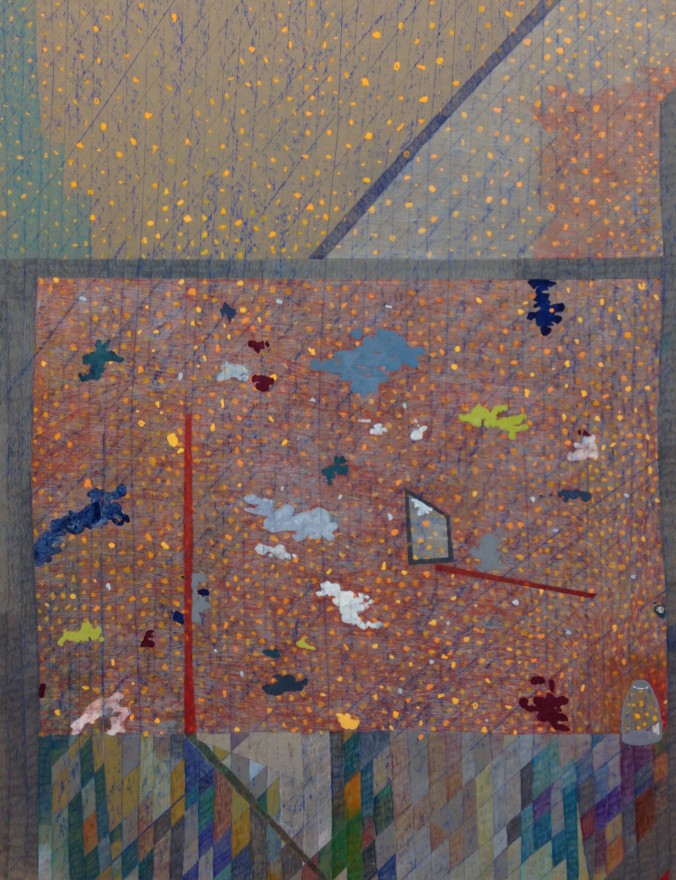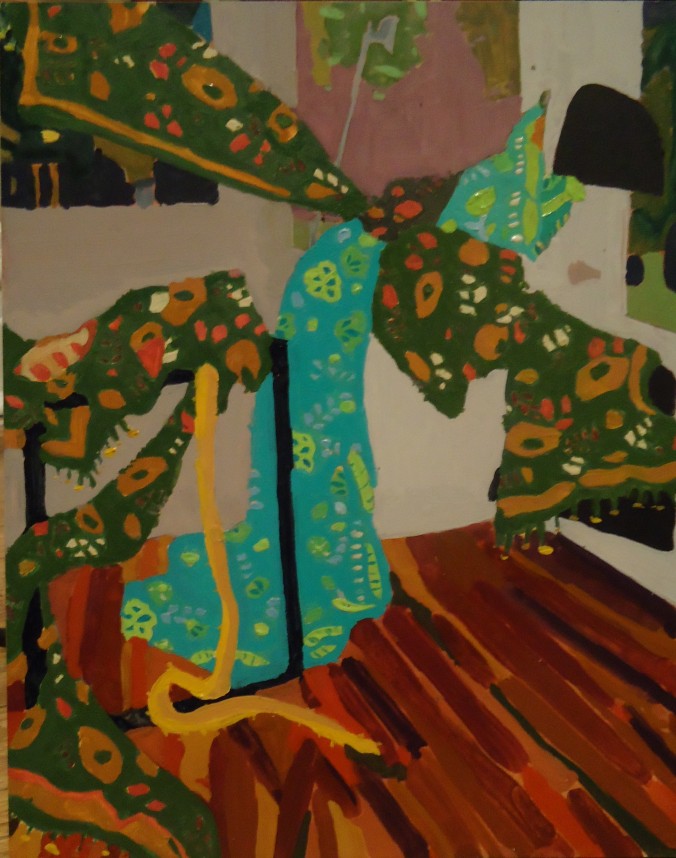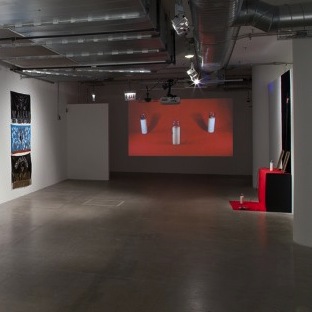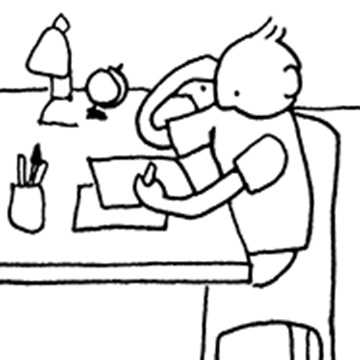I interviewed graduating Advanced Painting student, Sabeen Omar to talk about how her work merges narrative painting and the textiles she grew up around in Sri Lanka as well as the effect of having an indoor studio on her practice.

Where did you grow up? How were you first introduced to art?
I grew up in Colombo, Sri Lanka. Our house was filled with textiles and antique wooden ornaments. We didn’t have much space and whatever we had was filled with this. It influenced me a lot – now that I have some distance from it I can appreciate the sensory overload.
What are your influences?
Definitely textile. Recently I’ve been looking at snow a lot. You know when you walk out of the Michigan building around 7:00 and the sky is that deep blue and it’s snowing really heavily? That’s what I want my paintings to look like — a space filled with weightless flutter. I love the Byzantine paintings in the museum. I also look at Indian Mughal paintings and Vuillard a lot.

Has the geographic change of moving to a different landscape (Chicago) affected your practice?
I wouldn’t say I had a practice in Colombo. After graduating from college I moved back home for a year and was working full time. Every Saturday I’d have a class with Leo, the person who taught me to paint. I used to do as many sketches from observation as I could during the week. At the end of the year I had a portfolio to apply to SAIC with, but it wasn’t much of a practice.
I feel a real push and pull between a desire to be controlling in your work and a desire to liberate yourself from what you may perceive to be the constraints or limitations of making. Do you feel this tension? Is finding that balance an important part of your practice?
This is where my math brain and art brain fight! I don’t see it so much as liberating myself from perceived constraints of making – but I do start with a geometric shape that alludes to an interior. The color and marks come next and they either override this structure or are governed by it. Finding the balance between this is important.
In your paintings I feel the grid acts as a foundational element that grounds the image that allows for play on top of it or even with the structure itself. They’re structural compositionally, but anything but traditional or predictable. Why do you use grids in your work? Why do you think the work relies on them?
The grid came into my work when I was trying to come up with how to combine an oil painting with a piece of needlework. The grid represented a ‘warp’ and ‘weft’ that could stand in for canvas or a fabric. I don’t think my work relies on the grid – I just made a piece that is only partially gridded. The next one is not going to have a grid.

What does having a physical space to make art mean for your process, and how do you make your space work for you?
That was a hard one for me to work out. Having a studio really forced me to think about subject matter and content. I used to paint interiors and landscape from observation. But having to be in this white box — with no natural light — that was not a space I lived in, or the outside, gave me an interesting interior/exterior relationship to play with in the work. I keep my studio empty, I am allergic to clutter from having grown up with it. I have books I look at every morning or an observational painting I made recently as propelling forces.
The physical work of your hands — the folding, cutting, bending, manipulating — seems very important to you. Do you want your work to readily reveal the presence of the hand and the often time-intensive process?
I do. My nose is really close to the paintings when I make them. I think that has a certain kind of intensity to it, which comes through.
Do you see your work as autobiographical at all? Does personal history work its way into your practice-how important is narrative to you?
No the work isn’t autobiographical, but it is narrative. I use memory to make up stories for each painting. An evening I remember clearly from 1995 is when the oil reserve five kilometers away from where we lived was bombed. When my father came home from work that night he and I stood outside looking at the sky for a long time. It was smoky, filled with floating flames — a red sky. I used this story of a red sky for my recent paintings. I thought okay, I can make a painting about a red sky because I have seen it. Though I’m wary about being too heavy handed in my painting that it is a sky after a bomb. It’s not only about the bomb either.
What keeps you returning to nature or outside in general?
I need to go outside and get away from studio from time to time. I was walking past the construction sight on Monroe and Columbus and it had all these little orange cones. They really stood out against the dug up soil and I thought that looks like one of my paintings! So I went back there and painted it from observation. This particular painting informed the next paintings I made in the studio in a big way.
Where does the color come from?
Everywhere! But seriously, I don’t know, if I did I would keep going back there. Last semester Tyson Reeder told me that my color was the protagonist of the work and it tied together all the different things going on in my studio — I like that idea.







